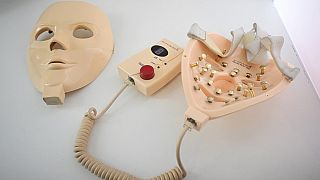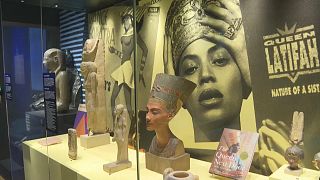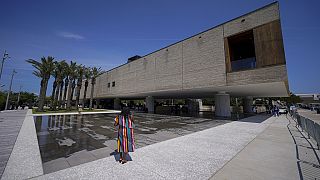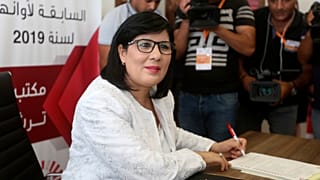Tunisia
The largest museum in Tunisia has reopened to the public. The museum is housed in a 19th century Ottoman governor's palace located near the parliament in Tunis.
Visitors gazed Thursday (Sep. 14) at several giant antique mosaic pieces, among them depictions of the Roman god Neptune or Hercules and his beloved Omphale.
The Bardo's fame originates from its countless rare artefacts discovered during excavations undertaken in Tunisia since the XIX th Century.
Located in the heart of the Mediterranean Tunisia has been at the crossroads of many of the world's renowned civilizations.
"It's different from other museums because it exhibits artefacts, whereas other museums bring in statues from other countries and exhibit them," Selim Yahyaoui a proud local visitor says.
"On the other hand, we have everything at our feet and that is of great value compared with other museums in the world."
Curious to discover Tunisia's "treasures"
The museum was closed after Tunisia's president suspended the legislature and assumed wide-ranging powers in 2021.
Officially, the Bardo closed for renovation.
Several spaces were enlarged, and some collections were relocated. New sections were also added, among them one dedicated to Islamic manuscripts..
"I'm very honoured to be here at the Bardo which has finally reopened today. I love the pieces they are magnificent and how they portrayed the building itself it's gorgeous, so well done," Maria , tourist from New Zealand says.
The museum has a tradition of organizing scientific seminars and meetings as well as welcoming young people for workshops. The youth can learn more about moulding and Arab calligraphy for instance.
"I am happy to be able to finally visit the museum before returning to Germany," said Radhia Mokni, 25.
A museum worker herself, she said she was curious to discover "the treasures" of Tunisia's heritage.
"There is so much richness" in the Bardo museum, she said. "I am very glad about the reopening because this place is a cultural beacon for Tunisia."
On the ground floor, the marble statue of the Roman goddess of harmony was on display next to the funeral stela of the victims of a bloody 2015 attack against the museum.
The shooting attack, claimed by the Islamic State group, left 21 foreign tourists and one Tunisian police officer dead.
"This is a message of peace and tolerance," Nait Yghil said of the reopening.













00:04
Jailed Tunisian opposition leader Jawhar Ben Mbarek assaulted in prison, family says
01:07
Thieves steal ancient statues from Syria's National Museum of Damascus
Go to video
Protesters in Nigeria disrupt opening of major West African art museum
02:18
Unique marble mask unearthed at Carthage's Tofet site in Tunisia
01:28
Egypt's immense new antiquities museum opens after two-decade build
Go to video
Grand Egyptian museum set for historic opening, showcasing the full legacy of Tutankhamun